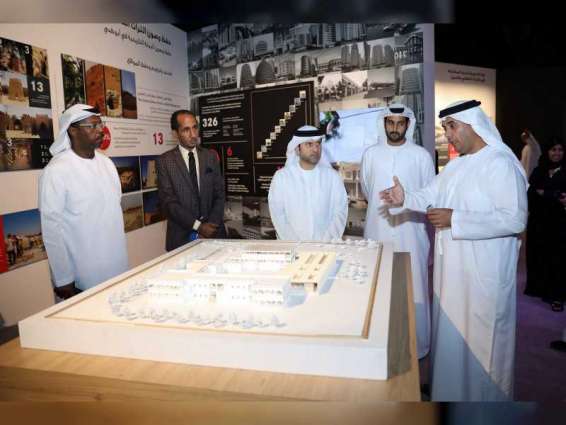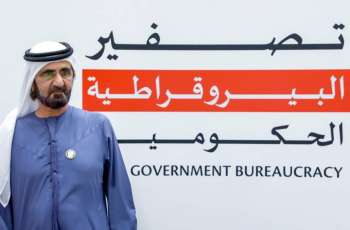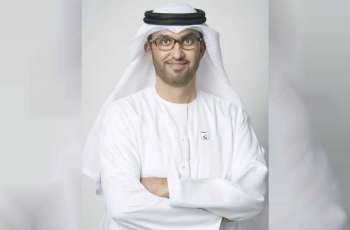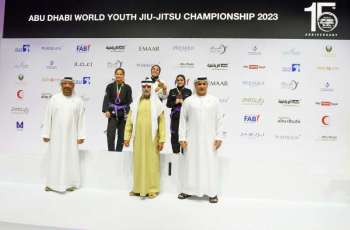ABU DHABI, (Pakistan Point News - 07th Nov, 2019) The Department of Culture and Tourism - Abu Dhabi, DCT-Abu Dhabi, presented Abu Dhabi’s five-year Culture Sector Strategy to a group of officials, cultural specialists and media representatives, who visited the Abu Dhabi Cultural Agenda exhibition at Manarat Al Saadiyat.
DCT-Abu Dhabi developed the emirate’s Culture Sector Strategy to strengthen the foundations and infrastructure of Abu Dhabi’s cultural ecosystem. To achieve this, five strategic objectives were set: To preserve and sustain Abu Dhabi’s cultural heritage; to increase awareness of, and engagement with, cultural heritage and the arts; to stimulate creativity as a driver for education and social change; to build and enable capacity in Abu Dhabi’s culture sector; and lastly, to contribute to economic growth and diversification.
Mohammed Khalifa Al Mubarak, Chairman of DCT Abu Dhabi, said, "Having gathered all of our recent culture sector milestones and statistics for display in an exhibition, it is clear to see that we have achieved much in a short amount of time, and excitingly, we still have many projects in the pipeline. The most significant of these is the Zayed National Museum, the national museum of the UAE, which will further shape the distinctive features of Saadiyat Cultural District to form the vibrant new cultural heart of the capital."
Saif Saeed Ghobash, Under-Secretary of DCT Abu Dhabi, said, "Abu Dhabi’s cultural strategy dovetails well with our plan for the economic diversification of the emirate. As our cultural offering continues to grow by leaps and bounds, cementing our status as a world-class, international hub for arts and heritage, new industries are taking hold and even more visitors are drawn to the emirate, further bolstering our booming tourism sector."
Many of the ambitious targets and goals set across these objectives have been achieved or are on track to be realised shortly.
Preserving and sustaining Abu Dhabi’s cultural heritage A significant achievement for the protection of Intangible Heritage has been the successful inscription of eight elements on the UNESCO Lists of the Intangible Cultural Heritage of Humanity, the work and dossiers for six of which were led by Abu Dhabi. The inscribed heritage elements are Falconry, Al Sadu (weaving), Al Ayyala (traditional group performance), Al Taghrooda (poetry), Gahwa (Arabic coffee), Majlis (council gathering), Al Azi and Al Razfa (both traditional performing arts).
Significant progress has been made in recording oral histories, as can be seen with the successful annual GCC Heritage & Oral History Conference and also important programmes implemented by other cultural institutions, such as the Salama Bint Hamdan Al Nahyan Foundation and its "Lest We Forget" initiative. To support artisans and engage the public with traditional products and practices, DCT-Abu Dhabi organises Al Ain’s annual Traditional Handicrafts Festival and actively supports and participates in Heritage festivals in the emirate and across the region. Recently, Bait Al Gahwa and House of Artisans were established and are respectively dedicated to preserving the rituals of Arabic coffee and traditional Emirati crafts. Future plans include the new Maritime Heritage Festival, starting in 2020, and the House of Heritage, which will showcase the traditional performing arts of the UAE.
DCT-Abu Dhabi’s work in preserving the emirate’s Historic Environment has included the inscription of several important historic sites in Al Ain onto the list of UNESCO World Heritage Sites, such as Jebel Hafit, Hili, and Bidaa bint Saud, as well as the six Al Ain oases, of which Al Ain Oasis is open to the public. The extensive excavation, documentation and protection of Abu Dhabi’s significant archaeological sites, including Marawah, Baynunah, and Sir Bani Yas, among many others, have taken place.
In addition to preserving the heritage of the ancient past, DCT Abu Dhabi is pioneering a new initiative for the conservation of the emirate’s modern heritage, which celebrates the achievements of our recent past, including culturally significant sites and structures.
Projects in progress include the further development of the Saadiyat Cultural District, with the upcoming Zayed National Museum and Guggenheim Abu Dhabi. Al Ain’s cultural offering will also soon be bolstered by Bait Mohammed Bin Khalifa House, Jebel Hafit Desert Park, Murabba’a Fort and the Al Ain Museum.
Increasing awareness of and engagement with cultural heritage and the arts Abu Dhabi Classics, Bait Al Oud, and Umsiyat are just some the numerous performing arts initiatives, while a wide and diverse visual arts programmes run across the emirate’s cultural centres and venues such as Manarat Al Saadiyat and Cultural Foundation, where exhibitions and Artists in Residence programmes take place alongside a year-round Calendar of workshops, educational and cultural initiatives. Numerous festivals and annual cultural platforms such as summits, conferences and fairs take place in Abu Dhabi, including Al Hosn Festival, Abu Dhabi Art, CultureSummit and the Archaeology Conference.
Stimulating creativity as a driver for education and social change DCT-Abu Dhabi has also implemented youth-oriented cultural education initiatives such as the Talent Development Programme, which identifies and nurtures the artistic development of gifted and talented students.
New policies and strategies to build and nurture the sector are also planned, in line with Abu Dhabi’s Cultural Heritage Law.
Crucial to social change are Abu Dhabi’s strategic partnerships with key cultural institutions around the world. These include the inter-governmental agreement with France that resulted in Louvre Abu Dhabi and the hosting of the Safeguarding Endangered Cultural Heritage in Conflict Areas summit, which leads to the establishment of the International Alliance for the Protection of Heritage. Another prime example is the CultureSummit Abu Dhabi, organised annually by DCT-Abu Dhabi in collaboration with five international cultural partners representing influential sectors in the fields of arts, media, heritage, museums and technology.
Building and enabling capacity in Abu Dhabi’s culture sector to contribute to economic growth and diversification Going forward, DCT-Abu Dhabi looks to further nurture the market, create a lasting social and economic impact, and extend the culture value chain to include the dissemination and transfer of knowledge, capacity building and strong cultural partnerships.
Capacity building in the sector is being achieved through the many education programmes and facilities across the emirate, including the new higher education degrees, such as Museum Studies, being offered at universities, in addition to the Abu Dhabi Statistics Programme, Strategic Research partnerships with academies and universities, the establishment of a cultural grant programme, and cross-government policies in social and economic development.
Zayed National Museum Construction is underway on the Zayed National Museum, the national museum of the UAE, which will narrate the story of the late Sheikh Zayed bin Sultan Al Nahyan, the founding father of the UAE, and highlight the history of the region and its cultural connections with countries around the world.
The museum will honour Sheikh Zayed bin Sultan Al Nahyan’s strongly held values, which encompass a passionate belief in education, the environment, history, heritage and culture, all underpinned by his humanitarianism and deeply held faith.
Lord Norman Foster, the winner of the Pritzker Architecture prize and one of the most prolific architects of his generation, conceived the design of the museum after his practice, Foster + Partners, won a worldwide pitch.
Zayed National Museum’s distinctive towers (‘Wings’) were inspired by Sheikh Zayed’s passion for falconry and the rich tradition of this heritage practice in the Gulf.
The atrium of the museum provides a welcoming space for all and announces the museum as a national institution, a cultural destination and a centre for learning.
The two galleries on the ground floor represent the heart of the museum. The extraordinary life of the late Sheikh Zayed bin Sultan Al Nahyan and the foundations of the UAE are narrated in the main gallery, while the Landscapes and Life gallery shows how the nation’s landscapes and rich natural resources were formed.
On the first floor of the museum, four pod-shaped galleries take the visitor on a journey through the history of the country.
The Zayed National Museum will offer visitors a unique experience that engages the mind, raises questions and encourages dynamic and interactive dialogue while delving into the Founding Father’s personality and vision.




